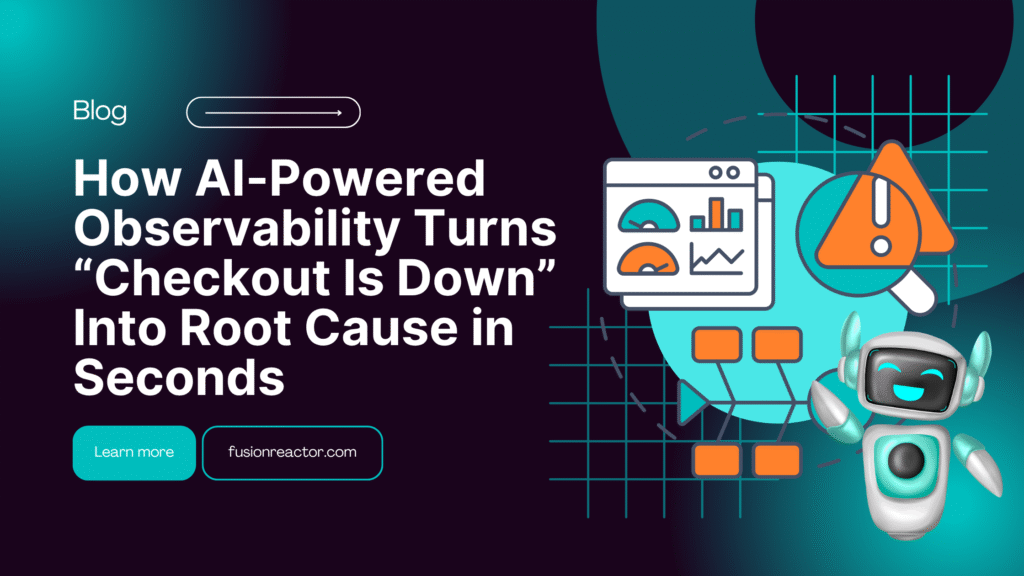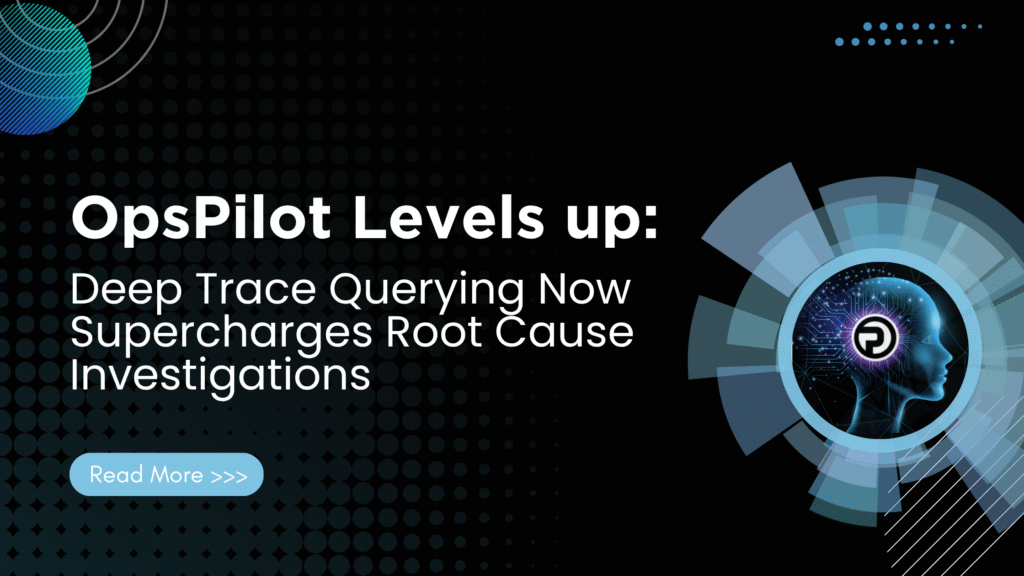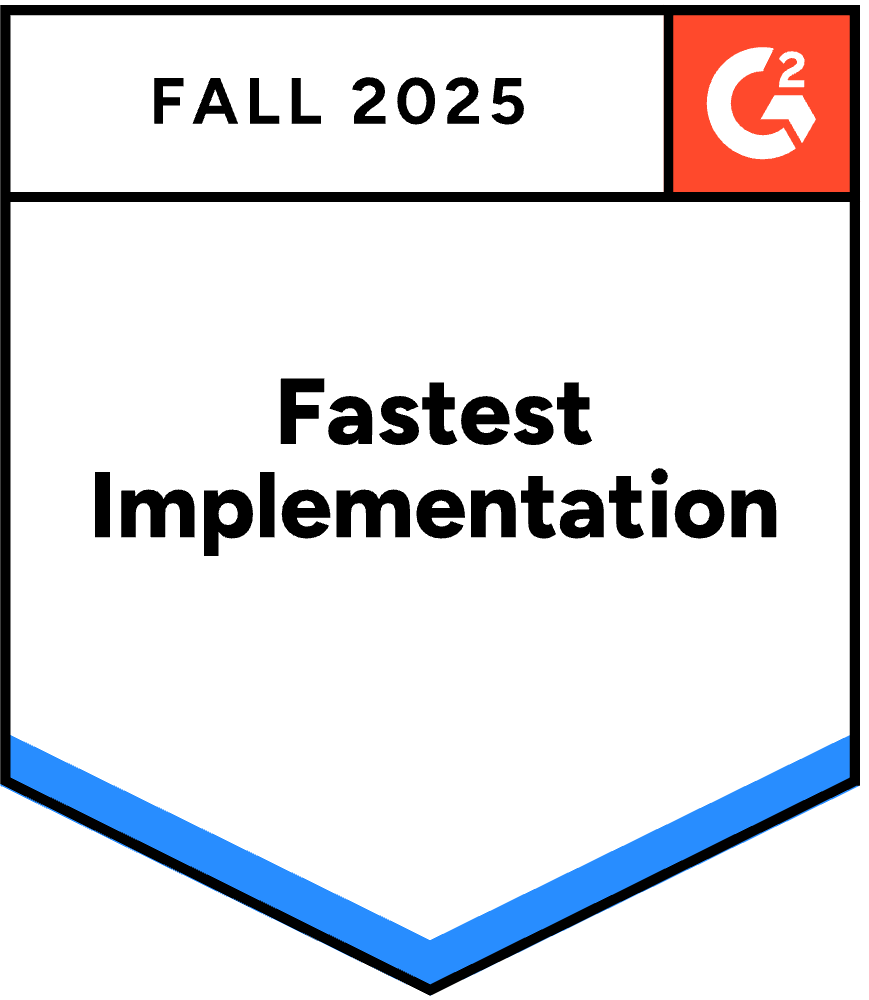It’s Monday morning. You’re halfway through your first coffee when Slack explodes:
“Customers can’t complete checkouts!” “Payment processing is down!” “Revenue is dropping – how bad is this?”
Your heart rate spikes. Every minute of downtime means lost revenue. The pressure is on.
In a traditional monitoring setup, you know what comes next: frantic dashboard hopping, grep-ing through logs, pinging the database team, checking DNS, examining network configs. If you’re lucky, you’ll find the root cause in an hour or two. If you’re not, it’s an all-hands war room for the afternoon.
But what if you could skip all that and get answers in seconds instead?
The Traditional Troubleshooting Marathon
Here’s how this usually plays out:
Step 1: Confirm the Problem (5-10 minutes)
- Check APM dashboard for error spikes
- Verify payment service is actually down
- Look at recent deployments
- Check if it’s affecting all users or just some
Step 2: Find the Failing Service (10-20 minutes)
- Examine payment service logs
- Check checkout service logs
- Review frontend error logs
- Try to piece together the error chain
Step 3: Dig Into the Root Cause (30-60 minutes)
- SSH into payment service containers
- Examine database connection strings
- Check DNS resolution
- Test database connectivity manually
- Review infrastructure changes
- Check if other services can reach the database
Step 4: Coordinate Teams (15-30 minutes)
- Loop in database team
- Ping DevOps for infrastructure checks
- Update incident channel
- Notify stakeholders
Step 5: Understand Impact (10-15 minutes)
- Check how many services are affected
- Determine if this is cascading to other systems
- Estimate revenue impact
- Plan communication to customers
Total Time: 70-135 minutes minimum
And that’s just to diagnose the problem. You haven’t even started fixing it yet.
The Traditional Troubleshooting Marathon
Here’s how this usually plays out:
Step 1: Confirm the Problem (5-10 minutes)
- Check APM dashboard for error spikes
- Verify payment service is actually down
- Look at recent deployments
- Check if it’s affecting all users or just some
Step 2: Find the Failing Service (10-20 minutes)
- Examine payment service logs
- Check checkout service logs
- Review frontend error logs
- Try to piece together the error chain
Step 3: Dig Into the Root Cause (30-60 minutes)
- SSH into payment service containers
- Examine database connection strings
- Check DNS resolution
- Test database connectivity manually
- Review infrastructure changes
- Check if other services can reach the database
Step 4: Coordinate Teams (15-30 minutes)
- Loop in database team
- Ping DevOps for infrastructure checks
- Update incident channel
- Notify stakeholders
Step 5: Understand Impact (10-15 minutes)
- Check how many services are affected
- Determine if this is cascading to other systems
- Estimate revenue impact
- Plan communication to customers
Total Time: 70-135 minutes minimum
And that’s just to diagnose the problem. You haven’t even started fixing it yet.
🚨 Critical Issue: Payment service is experiencing 100% failure rate
due to MySQL database connectivity issues
Root Cause: getaddrinfo ENOTFOUND mysql
The payment service cannot resolve the MySQL database hostnameNo guessing. No speculation. The exact technical error that’s causing every payment to fail.
Quantified Impact Analysis
OpsPilot didn’t just find the error – it measured the scope:
- 100% payment failure rate (4 out of 5 spans failing)
- 25+ failed payment traces identified in the last hour
- Every payment request failing consistently
- Zero successful payments in the analyzed timeframe
This is the data you need for stakeholder communication and incident severity assessment.
Service Dependency Mapping
Here’s where OpsPilot goes beyond traditional monitoring. It automatically traced the cascading impact:
| Service | Error Rate | Impact | Root Cause |
|---|---|---|---|
| Payment Service | 100% | ❌ Critical | MySQL connection failure |
| Checkout Service | 2/12 spans failing | ⚠️ High | Downstream payment failures |
| Frontend Services | 3/4 spans failing | ⚠️ High | Cascading from payment issues |
Traditional monitoring shows you three separate problems. OpsPilot shows you one root cause with three symptoms.
Prioritized Action Items
Instead of leaving you with raw data, OpsPilot provided actionable next steps:
🔥 URGENT
Verify MySQL service availability
Check DNS resolution for "mysql" hostname
⚠️ HIGH
Restart payment service pods (clear cached DNS issues)
📊 MEDIUM
Monitor error rates post-fix
No ambiguity about what needs to happen first.
The Complete Error Chain
OpsPilot explained exactly how this failure propagates through your system:
1. Payment service attempts to connect to MySQL database
2. DNS resolution fails for hostname "mysql"
3. Database connection cannot be established
4. Payment transaction storage fails
5. Entire checkout process returns HTTP 500 errorsBut What About Other Services?
Great question. Because here’s where it gets even better.
We asked OpsPilot a follow-up: “Are payment failures correlated with any other service issues?”
OpsPilot analyzed the entire system and provided a correlation matrix:
Strong Correlations (>90%):
✅ Payment failures ↔ Checkout failures
✅ Checkout failures ↔ Frontend errors
✅ Frontend errors ↔ Proxy errors
✅ Load generator timeouts ↔ Payment unavailability
Weak/No Correlations:
❌ Payment failures ↔ Quote service errors (independent issue)
❌ Payment failures ↔ Infrastructure metrics (CPU, memory normal)
❌ Payment failures ↔ Other database services
Why this matters: OpsPilot didn’t just show what’s broken – it showed what’s not broken and what’s independently failing.
The Quote service errors? Separate issue requiring independent investigation. Don’t waste time thinking they’re related.
Infrastructure metrics normal? Don’t spin up an incident with the infrastructure team.
Resolution Impact Prediction
OpsPilot even predicted what would happen when the MySQL issue is fixed:
Immediate improvements:
- Checkout service errors will cease
- Frontend checkout flows will resume
- Load generator tests will pass
No change:
- Quote service errors (separate issue)
This kind of predictive analysis helps you set expectations with stakeholders and plan your incident response.
The Real Difference: Understanding vs Data
Traditional monitoring gives you metrics. Dashboards. Logs. Traces. All the raw ingredients.
OpsPilot gives you understanding.
It’s the difference between:
- Seeing 47 alerts fire ➡️ Understanding there’s one root cause with multiple symptoms
- Knowing payment service has errors ➡️ Knowing it’s a DNS resolution failure for MySQL
- Guessing at service dependencies ➡️ Seeing correlation percentages and error chains
- Making prioritization decisions ➡️ Getting prioritized action items
The Business Impact
Let’s do the math on what this means:
Traditional approach:
- Time to diagnosis: 90-120 minutes
- Teams involved: 3-4 (payment, database, DevOps, frontend)
- Revenue impact: 90-120 minutes of zero payment processing
- Engineering cost: 4 people × 2 hours = 8 engineering-hours
OpsPilot approach:
- Time to diagnosis: 120 seconds (question) + 5 minutes (verification)
- Teams involved: 1 (whoever asked OpsPilot)
- Revenue impact: 5-10 minutes of zero payment processing
- Engineering cost: 1 person × 10 minutes = 0.16 engineering-hours
Savings per incident:
- ⏰ 110 minutes faster resolution
- 💰 110 minutes less revenue loss
- 👥 7.84 engineering-hours saved
- 🎯 Lower MTTR (Mean Time To Resolution)
If you’re running an e-commerce platform doing $10M annually, 110 minutes of downtime costs approximately $2,100 in lost revenue. Per incident.
How many payment issues do you have per quarter?
How OpsPilot Actually Works
You might be wondering: “How did OpsPilot do all this in 120 seconds?”
Here’s what happened behind the scenes:
- Multi-Signal OpenTelemetry Analysis: OpsPilot simultaneously queried:
- Prometheus metrics for error rates
- Tempo distributed traces (OTel format) for request flows
- Service topology from OTel semantic conventions
- Alert states for active incidents
- Pattern Recognition Across OTel Signals: It analyzed 25+ failed traces to identify:
- Consistent error messages in span events
- Common failure points across trace trees
- Timing patterns in span durations
- Service interaction failures from span relationships
- Contextual Understanding: Using LLMs integrated with FusionReactor’s OpenTelemetry-native platform, OpsPilot:
- Understood service relationships from OTel resource attributes
- Recognized DNS errors mean connectivity issues
- Knew which services depend on payment processing from trace context propagation
- Prioritized actions based on span status and severity
- Natural Language Response: Instead of raw query results, it provided:
- Structured analysis in plain English
- Visual impact matrices
- Prioritized recommendations
- Predicted outcomes
This isn’t magic – it’s comprehensive OpenTelemetry observability combined with AI that understands your distributed system architecture.
The Future of Incident Response
Here’s what we believe: engineers shouldn’t need to be observability experts to troubleshoot production issues.
You shouldn’t need to:
- Master PromQL query syntax
- Understand trace sampling strategies
- Know which dashboard has which metric
- Remember which log contains which error pattern
You should be able to ask questions like you’d ask a senior engineer:
- “What’s broken?”
- “Why is it broken?”
- “What should I fix first?”
- “What happens when I fix it?”
That’s what OpsPilot delivers. Natural language queries that return expert-level analysis.
Built for OpenTelemetry-Native Environments
OpsPilot is designed specifically for modern, cloud-native architectures built on OpenTelemetry standards:
OpenTelemetry Integration:
- Native support for OTel traces, metrics, and logs
- Understands semantic conventions automatically
- Works with any OTel-instrumented application
- Correlates across the full observability signal spectrum
Cloud-Native Architecture Support:
- Microservices and distributed systems
- Kubernetes and containerized workloads
- Service mesh environments
- Event-driven architectures
Technology Agnostic:
- Java, Node.js, Python, Go, .NET, and more
- Any framework or runtime with OTel support
- Multi-language polyglot environments
- Hybrid cloud and on-premise deployments
Try It Yourself
OpsPilot is integrated into FusionReactor Cloud, providing AI-powered observability for OpenTelemetry-instrumented applications.
Whether you’re running microservices, containerized applications, or distributed cloud-native systems, OpsPilot can help you:
- Diagnose issues in seconds instead of hours
- Understand service dependencies and cascading failures
- Prioritize actions during incidents
- Reduce MTTR across your organization
Ready to transform how your team handles incidents?
Start your FusionReactor free trial and experience OpsPilot for yourself.
The payment service incident described in this post is from actual OpsPilot responses in a demo environment. All analysis, recommendations, and timing data are authentic outputs from OpsPilot’s AI-powered observability engine.













